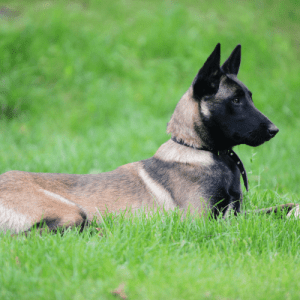
What Is The History Of The Belgian Malinois Breed?
The Belgian Malinois is a breed of dog that originated in Belgium. The breed was initially used as a working dog and is still used today. The Belgian Malinois is a medium-sized dog with a short coat and a square-shaped head. The breed is well known for loyalty, intelligence, and athleticism. The Belgian Malinois is one of four varieties of Belgian sheepdog, along with the Groenendael, Tervueren, and Laekenois. All four varieties are similar in appearance, but Belgian Malinois is the most popular variety in the United States. The Belgian Malinois was first imported to the United States in 1911, and the American Kennel Club (AKC) recognized the breed in 1915. The Belgian Malinois is a popular working dog and has been used as a police dog, service dog, guide dog, and search-and-rescue dog. The breed is also suitable as a companion animal.
What Does A Belgian Malinois Look like?
The Belgian Malinois is a dog characterized by its short, fawn-colored coat. The coat may have a black mask or be either double-coated or single-coated. The breed is known for being very active and energetic and for its loyalty and protectiveness.
How Big Is An Adult Belgian Malinois?
The average adult male Belgian Malinois weighs between 66 and 88 pounds, while the average adult female weighs between 55 and 77 pounds. Belgian Malinois are medium-sized dogs but relatively compact and athletic in build. Males are 24-26 inches while females are between 22-24 inches in height. They typically have a square-shaped head, with erect ears and almond-shaped eyes. Their tail is usually carried high and may be docked to a length of about 4 inches. Overall, Belgian Malinois are well-proportioned dogs with a strong, muscular appearance.
Are There Other Dog Breeds Related To The Belgian Malinois?
Several other dog breeds are related to the Belgian Malinois. These include the German Shepherd, Dutch Shepherd, French Shepherd, Belgian Tervuren, Groenendael, Laekenois, Malinois X, Mechelaar, Shepherds of the Pyrenees, and Briard. All of these breeds share some similarities with the Belgian Malinois in terms of appearance and temperament. However, they each have unique characteristics that make them special in their way.
What Is The Life Expectancy Of A Belgian Malinois?
The life of a Belgian Malinois is about 14 to 16 years. The number may differ based on the dog’s individual health and lifestyle. For example, a Belgian Malinois who lives an active lifestyle and receives regular medical care may live longer than one who is not as active and does not receive regular medical care. Overall, the average life expectancy of a Belgian Malinois is 14 years.
Can A Belgian Malinois Be Trained?
A Belgian Malinois can be trained to do many things, including obedience, protection, and tracking. They are intelligent dogs eager to please their owners, making them easy to train. A Belgian Malinois can be a great companion and loyal protector with proper training.
What Are Some Interesting Facts About A Belgian Malinois?
- The Belgian Malinois is a herding dog initially bred in Belgium.
- The Belgian Malinois is considered one of the most intelligent dog breeds.
- The Belgian Malinois is an energetic and active breed that needs a lot of exercises.
- The Belgian Malinois is a loyal and protective breed that makes an excellent guard dog.
- The Belgian Malinois has a short, thick coat that is easy to groom.
- The Belgian Malinois is a relatively healthy breed with few major health concerns.
How Does A Belgian Malinois Interact With People?
The Belgian Malinois is a very friendly and outgoing breed of dog. They love to meet new people and are always eager to please. They are great as family pets and protective of their owners. Owing to their intelligence and trainability, these dogs also make for excellent working dogs.
